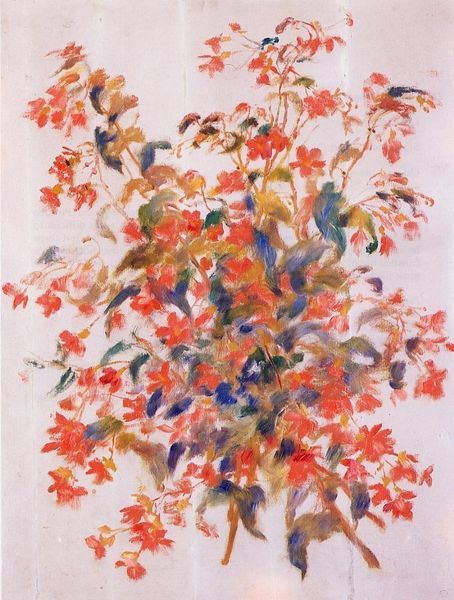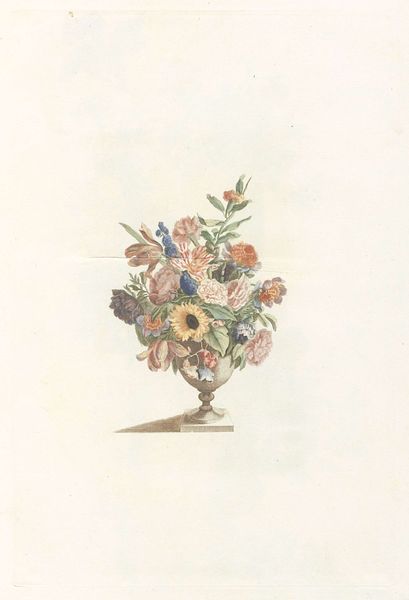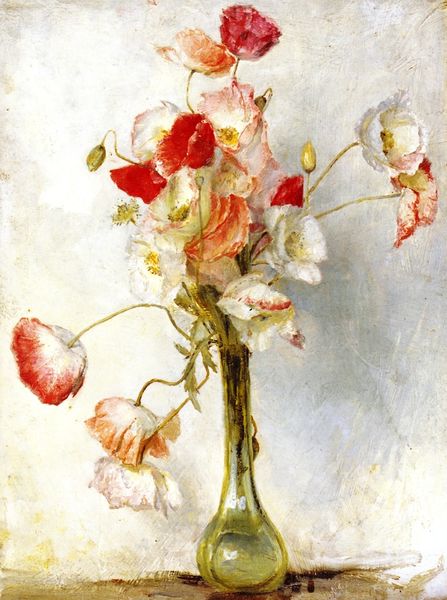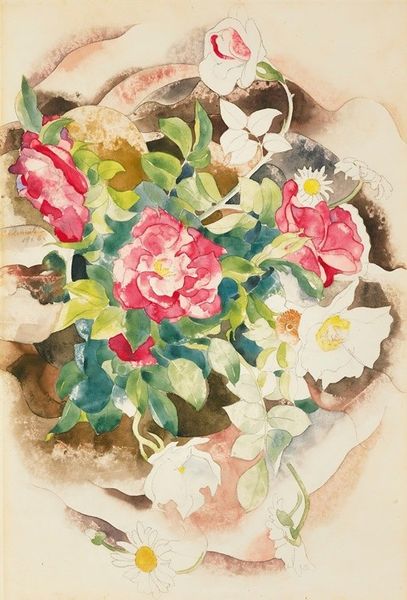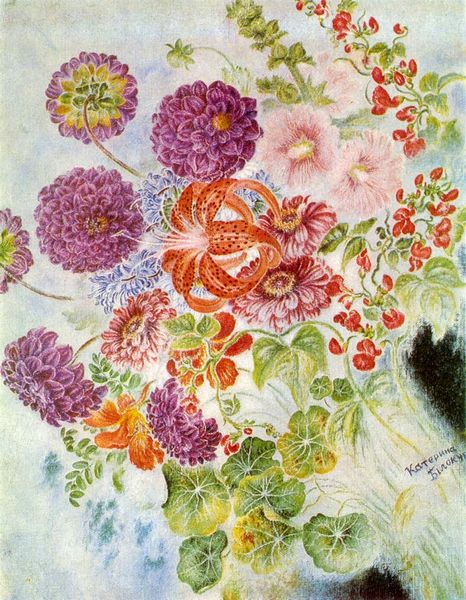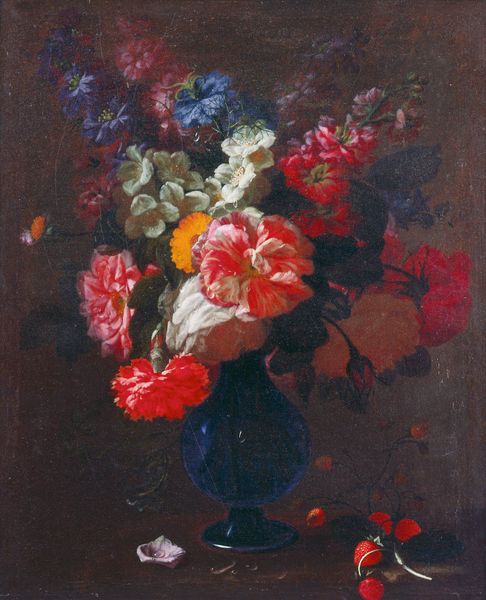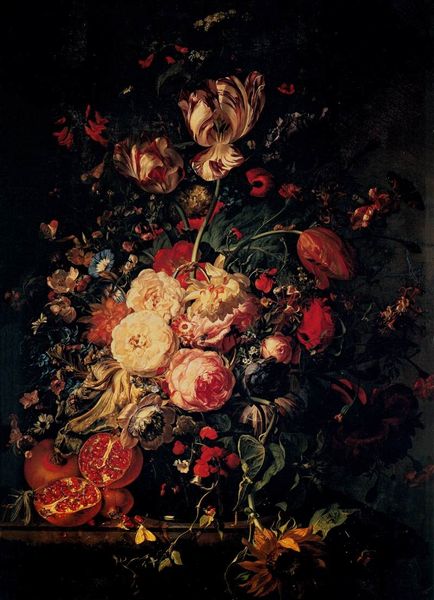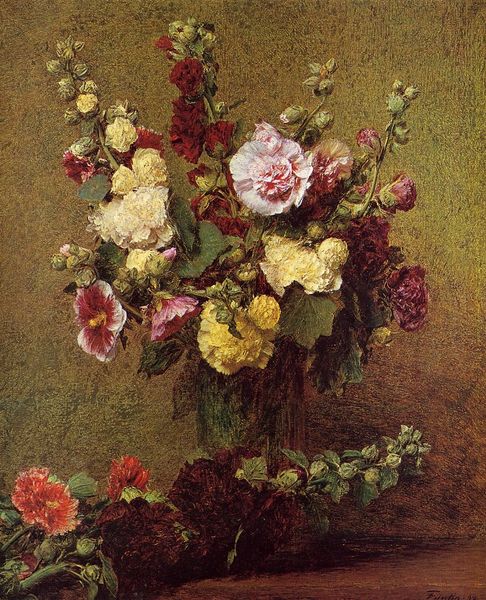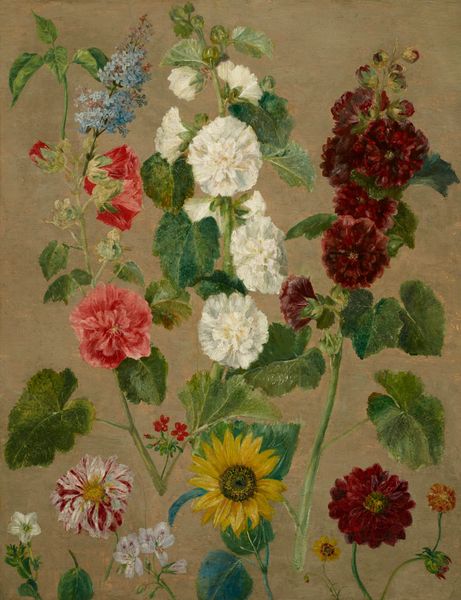
painting, oil-paint, photography, impasto
#
still-life
#
painting
#
impressionism
#
oil-paint
#
flower
#
photography
#
impasto
#
plant
Copyright: Public domain
Curator: We're looking at Pierre-Auguste Renoir's "A Bouquet of Roses" from 1879, currently housed at the Clark Art Institute. Editor: Well, first blush? It feels like a memory, or a half-forgotten dream of a summer garden. Not quite real, almost shimmering. Curator: Indeed, Renoir's handling of oil paint contributes to this impression. The visible brushstrokes and the impasto technique bring a certain tactility, a consciousness of the labor involved. We see the hand of the artist very clearly. Editor: Absolutely. You can almost smell the roses, feel the soft crumple of the petals, the waxy smoothness of the leaves. There's something fleeting about it too, like beauty captured just before it fades. That impressionist trick, I suppose, of trapping a moment. Curator: His use of light and color also draws attention to the socio-economic factors underpinning flower production and trade at the time. These imported flowers signify luxury and the evolving consumer culture. Editor: I find that a slightly cold assessment. Aren’t roses more about... well, love, transience, the vulnerability of beauty? You're reducing them to mere commodities! Curator: Not reducing, contextualizing. Renoir was part of a changing art world, reflecting new forms of production and leisure. Still life itself evolves from elaborate displays of wealth to more intimate bourgeois scenes. Editor: Fair point. But it also makes me wonder about the quiet moments in Renoir's studio. Was he thinking about capital and labor, or was he just utterly lost in the dance of light on those velvety petals? Curator: Perhaps a bit of both. The social and the personal are intertwined, and here they meet in the application of paint. Think too about the accessibility this afforded audiences to scenes of opulent pleasure, available at a cost. Editor: True enough. It’s hard to separate the pure sensory delight from the awareness that this kind of ephemeral beauty isn't free, isn't always within reach. It's a potent cocktail, really. Curator: Indeed, a reminder that art always bears the marks of its production. Editor: And hopefully, reminds us too to occasionally stop and smell the roses, regardless.
Comments
No comments
Be the first to comment and join the conversation on the ultimate creative platform.
